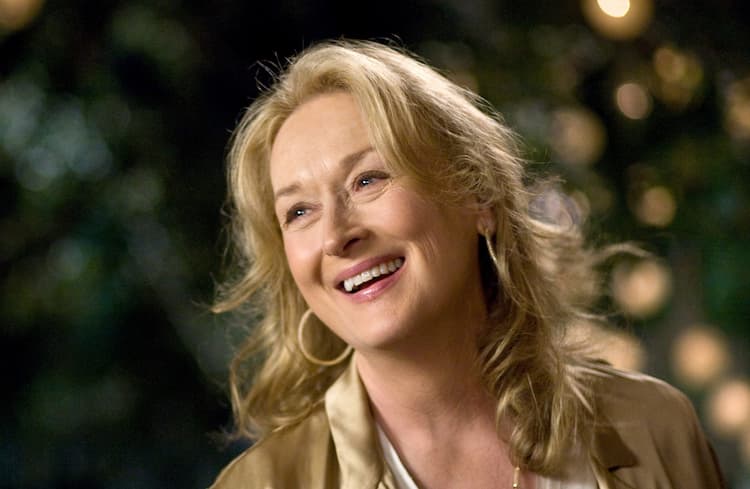Meryl Streep Biography
Meryl Streep is an American actress known for her versatility and ability to adapt to many dialects. Throughout her four-decade career, she has received several awards, including 21 Academy Award nominations, three wins, and 32 Golden Globe nominations, eight wins.
How old is Meryl Streep? – Age
She is 74 years old as of 22 June 2023. She was born in 1949 in Summit, New Jersey, United States. Her real name is Mary Louise Streep.
Meryl Streep Family – Education
Mary was the daughter of artist Mary Wilkinson Streep and pharmaceutical executive Harry William Streep Jr. Her two younger brothers, Harry William Streep III and Dana David Streep, are likewise performers. Her father was of German and Swiss ancestry, while her mother was English, German, and Irish. Her maternal great-great-grandparents were from Ireland’s Horn Head region. Meryl Streep was raised in Basking Ridge, New Jersey, as a Presbyterian and attended Cedar Hill Elementary School and Oak Street School.
She was a student at Bernards High School in Bernardsville, New Jersey, where she performed in the play The Family Upstairs. Streep was chosen to perform at a school recital when she was 12 years old, which led to opera studies with Estelle Liebling. Despite her accomplishments, she departed four years later. Streep had many Catholic school friends and went to Mass on a regular basis. She was a high school cheerleader and homecoming queen. Her house was located on Old Fort Road.
Who is Meryl Streep Husband? – Children
Six months after Cazale’s death, Streep married the sculptor Don Gummer. They have four children: musician Henry Wolfe Gummer, born in 1979, actresses Mary Willa “Mamie” Gummer, born in 1983, Grace Jane Gummer, born in 1986, and Louisa Jacobson Gummer, born in 1991, and musician Henry Wolfe Gummer, born in 1979.
What is Meryl Streep’s net worth in 2023? – Net Worth
She has an estimated net worth of $160 million.
How Tall is Meryl Streep? – Height
She stands at a height of 5 feet 6 inches (1.68 m).
Meryl Streep Mamma Mia
Following her role in Mamma Mia!, Streep’s interpretation of the title song rocketed to fame on the Portuguese music charts, peaking at number eight in October 2008. Her rendition of “Mamma Mia” earned a prize for “Favorite Song From A Soundtrack” at the 35th People’s Choice Awards. Streep received her fifth Grammy nomination in 2008 for her work on the Mamma Mia! album.
Meryl Streep Career
In 1975, Streep started her vocation at the Eugene O’Neill Theater Center’s Public Writers Gathering, where she acted in five plays north of about a month and a half. She moved to New York City in 1975 and was projected by Joseph Papp in a development of Trelawny of the Wells at the Vivian Beaumont Theater. She proceeded to show up in five additional jobs in her most memorable year in New York, remembering for Papp’s New York Shakespeare Celebration creations of Henry V, The Restraining of the Wench with Raul Julia, and Measure for Measure inverse Sam Waterston and John Cazale.
In spite of not tried to turn into a film entertainer, Robert De Niro’s presentation in Cabbie (1976) significantly affected Streep, who concluded that that was the sort of entertainer she needed to be the point at which she grew up. Streep started trying out for film jobs, and went through a fruitless tryout for the lead job in Dino De Laurentiis’ Top dog Kong. She kept on dealing with Broadway, showing up in the 1976 twofold bill of Tennessee Williams’ 27 Carts Loaded with Cotton and Arthur Mill operator’s A Memory of Two Mondays. She got a Tony Grant selection for Best Highlighted Entertainer in a Play.

Streep’s most memorable element film job came inverse Jane Fonda in the 1977 film Julia, in which she played a little part during a flashback succession. Nonetheless, Streep expressed in 2015 that Fonda affected her as an entertainer, and acknowledged her for opening “likely a larger number of entryways than I presumably even know about.” Robert De Niro recommended that she assume the part of his sweetheart in the conflict film The Deer Tracker (1978), which presented Streep to a more extensive crowd and procured her a selection for the Foundation Grant for Best Supporting Entertainer.
In the 1978 miniseries Holocaust, Streep assumed the main part of a German lady wedded to a Jewish craftsman played by James Woods in Nazi time Germany. She viewed the material as “tenaciously honorable” and declared to play taken on the part for monetary benefit. She made a trip to Germany and Austria for shooting while Cazale stayed in New York. Upon her return, Streep found that Cazale’s disease had advanced, and she breast fed him until his passing on Walk 12, 1978. With an expected crowd of 109 million, Holocaust brought a more extensive level of public acknowledgment to Streep, who tracked down herself “very nearly public perceivability”.
In 1978, Streep assumed the supporting part of Leilah in Wendy Wasserstein’s Exceptional Ladies and Others in a May 1978 “Theater in America” TV creation for PBS’s Extraordinary Exhibitions. She supplanted Glenn Close, who assumed the part in the Off-Broadway creation at the Phoenix Theater.
To redirect herself from the melancholy of Cazale’s passing, Streep acknowledged a job in The Temptation of Joe Tynan (1979) as the happy old flame of Alan Alda. She played out the job of Katherine in The Restraining of the Vixen for Shakespeare in the Recreation area and furthermore assumed a supporting part in Manhattan (1979) for Woody Allen.
In the show Kramer versus Kramer, Streep was given inverse Dustin Hoffman a role as a despondently hitched lady who leaves her better half and kid. She felt that the content depicted the female person as “excessively abhorrent” and demanded that it was not agent of genuine ladies who confronted marriage breakdown and youngster care fights. The film was dubious among women’s activists, however it showed Streep’s “own personal power,” composing that she was one of the “interesting entertainers who can instill the most standard minutes with a smidgen of secret.”
For Kramer versus Kramer, Streep won both the Brilliant Globe Grant and the Foundation Grant for Best Supporting Entertainer, which she broadly left in the women’s room subsequent to giving her discourse. She was likewise granted the Los Angeles Film Pundits Affiliation Grant for Best Supporting Entertainer, Public Leading body of Audit Grant for Best Supporting Entertainer, and Public Culture of Film Pundits Grant for Best Supporting Entertainer for her aggregate work in her three film arrivals of 1979. Both The Deer Tracker and Kramer versus Kramer were significant business triumphs and back to back victors of the Foundation Grant for Best Picture.
Meryl Streep Oscar
With these nominations, Streep becomes the most Academy Award-nominated performer in history, with 21 total (17 for Best Actress and four for Best Supporting Actress), as well as one of only 13 performers to win an Oscar in both acting categories and one of only three performers to win three Academy Awards in both acting categories (the others being Ingrid Bergman and Jack Nicholson).
Streep is also the recipient of six Grammy Award nominations, five Primetime Emmy Award nominations (three of which she won), and one Tony Award nomination; she is one of just a few artists to be nominated for the Triple Crown of Acting and the EGOT.
Her additional awards include two BAFTA nominations for Best Actress in a Leading Role (for The French Lieutenant’s Woman and The Iron Lady), eight Golden Globe nominations (including the honorary Cecil B. DeMille Award), and two Screen Actors Guild nominations.
